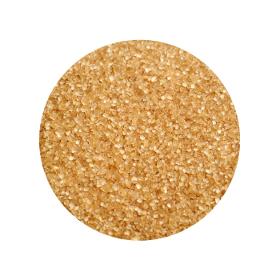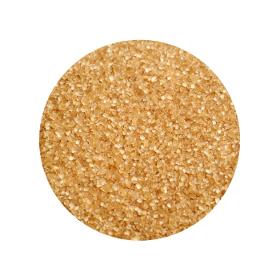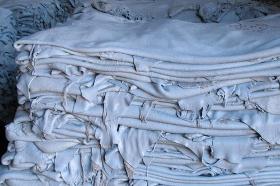- europages
- >
- COMPANIES - SUPPLIERS - SERVICE PROVIDERS
- >
- raw
Results for
Raw - Import export

VEHGRO B.V
Germany
"Process and Origin This raw cane sugar is a 100% natural sugar from Colombia. Cane sugar is made from sugar cane. The juice of this sugar cane is boiled down, crystallised, ground into the sugar and sieved. Raw cane sugar misses a step in the production process, because it is not refined. There are, in addition to this brown/gold cane sugar, other different types; white cane sugar and dark brown cane sugar. The colour depends on the amount of added molasses. In the Middle Ages, cane sugar belonged to the expensive and rare spices. The raw sugar was transported to Western Europe in the form of sugar loaves and there purified in sugar bakeries. Use Cane sugar is often used as a replacement for beet sugar. It is delicious in various dishes and drinks."
Request for a quote
VEHGRO B.V
Germany
"Cane sugar Cane sugar is produced by boiling the juice of the sugar cane until a solid substance remains. This is also called crystallisation. After that, unevenness is sieved out and cane sugar remains. During the process, a small part of molasses is added, which explains the beige, cream colour. This organic raw cane sugar has a slightly malty pleasant sweetness. It can be used in all sorts of ways for which normal sugar is also used."
Request for a quote
VEHGRO B.V
Germany
"History and Origins Cacao (Theobroma) was first harvested by the Olmecs in Mexico as early as 1000 B.C. At that time it was mainly used for fortifying drinks. Over the years, the Mayas and the Aztecs adopted this use in their cultures. Cocoa became part of ceremonial rituals and cocoa beans were a means of payment. In the 16th century, the Spanish brought cocoa to Europe. In the mid-17th century, it became a popular drink. Cocoa trees were introduced to Asia and West Africa through colonies of various European countries, as there was a rising demand for chocolate in Europe. The cocoa bean is the raw material used in the production of chocolate. These cocoa beans originate from the tropical climates of South America (Ecuador). The Theobroma cacao tree is sacred to the Mayans and Aztecs. The cacao beans from the tree are harvested by hand and the raw beans are then cleaned in natural water and selected for the best quality. This process ensures that the nutritio…"
Request for a quote
VEHGRO B.V
Germany
"What are Cacao nibs? Cacao nibs come from the cacao bean. The fruit grows directly on the stem. Cacao beans are grown in countries around the equator. Cocoa is used to make chocolate. Cacao nibs cannot be compared with chocolate. Cacao nibs are slightly drier in taste and actually they are a kind of small pieces of raw and pure cacao. Are Cacao nibs healthy? Cacao nibs are certainly healthy because they are not processed. Cacao nibs are rich in antioxidants that contribute to healthy heart and blood vessels. Because of the high content of protein, fat, carbohydrates, fibre, iron, calcium, magnesium, B vitamins and vitamin C and E, this product can rightly be called a superfood. Raw, organic cacao nibs are free of added pesticides, sugar and fat. Raw cacao contains minerals and trace elements including copper, zinc, manganese, magnesium and chromium. How to use cacao nibs? The raw cacao nibs are easy to process in smoothies, coffee, desserts, yo…"
Request for a quote
VEHGRO B.V
Germany
"History and Origins Cacao (Theobroma) was first harvested by the Olmecs in Mexico as early as 1000 B.C. At that time it was mainly used for fortifying drinks. Over the years, the Mayas and the Aztecs adopted this use in their cultures. Cocoa became part of ceremonial rituals and cocoa beans were a means of payment. In the 16th century, the Spanish brought cocoa to Europe. In the mid-17th century, it became a popular drink. Cocoa trees were introduced to Asia and West Africa through colonies of various European countries, as there was a rising demand for chocolate in Europe. The cocoa bean is the raw material used in the production of chocolate. These cocoa beans originate from the tropical climates of South America (Ecuador). The Theobroma cacao tree is sacred to the Mayans and Aztecs. The cacao beans from the tree are harvested by hand and the raw beans are then cleaned in natural water and selected for the best quality. This process ensures that the nutritio…"
Request for a quoteDo you sell or make similar products?
Sign up to europages and have your products listed

VEHGRO B.V
Germany
"History and Origins Cacao (Theobroma) was first harvested by the Olmecs in Mexico as early as 1000 B.C. At that time it was mainly used for fortifying drinks. Over the years, the Mayas and the Aztecs adopted this use in their cultures. Cocoa became part of ceremonial rituals and cocoa beans were a means of payment. In the 16th century, the Spanish brought cocoa to Europe. In the mid-17th century, it became a popular drink. Cocoa trees were introduced to Asia and West Africa through colonies of various European countries, as there was a rising demand for chocolate in Europe. The cocoa bean is the raw material used in the production of chocolate. These cocoa beans originate from the tropical climates of South America (Ecuador). The Theobroma cacao tree is sacred to the Mayans and Aztecs. The cacao beans from the tree are harvested by hand and the raw beans are then cleaned in natural water and selected for the best quality. This process ensures that the nutritio…"
Request for a quote
VEHGRO B.V
Germany
"Origin and history Maca, also called Peruvian ginseng. This is an herbaceous biennial plant native to the Andes Mountains in Peru. The crop was first cultivated about 2,000 years ago. Maca grows at altitudes above 3,800 metres on rocky ground. Maca grows well at temperatures up to -10 degrees Celsius. Maca is mainly grown for consumption of the root. The Maca root varies greatly in size and shape. Maca is a radish-like plant, which the Spanish used to give their horses on the advice of the Incas. In the Junin region of Peru, maca is consumed in large quantities. It is a readily available and highly nutritious source of food. It is eaten fresh with meat, cooked in underground ovens lined with hot stones (pachamancas), or dried before being cooked into a porridge in milk. A particular drink made from maca is popularly called 'maca chica'. Another use is grinding the dried root into maca flour for baking. Processing The maca seed is sown in September, abo…"
Request for a quote
J.D.F. IMPORT-EXPORT GMBH
Germany
Product Name: Wet Blue Leather Material: sheep leather Color: Light Blue Features: 100% natural
Request for a quote
J.D.F. IMPORT-EXPORT GMBH
Germany
Product Name: Wet Salted Donkey / Goat Skin / Donkey / Salted Cow Hides weight 16 to 20 kg Origin: London EU No: Available thickness 0.5-0.7mm/0.6-0.8mm/0.7-0.9mm Average size 42 sq.ft. Selection 90% a, 10% b Packing: 2,700 piece per 20'ft container Customized: bulk Loading 1 x 20ft container = 2700 pieces
Request for a quote
J.D.F. IMPORT-EXPORT GMBH
Germany
Our production process:dust removal → washing → high temperature disinfection. Carefully selected high-quality horse tail hair, color uniform, no variegated, bright color, clean and pollution-free. Carefully selected by hands to achieve the purpose of uniform length, to avoid short hair mixed. According to users' requirements,we are able to process for a variety of livestock products crafts.Special products can be produced, and we can develop new products. Price varies according to size, color and hair,please refer to the material item. Product Data; Sizes;4"-5" , 6"-8", 9"-12", 13"-15", 16"-17", 18"-21" Color;white black mixed and can dye the color as your design.
Request for a quoteResults for
Raw - Import exportNumber of results
11 ProductsCountries
Company type